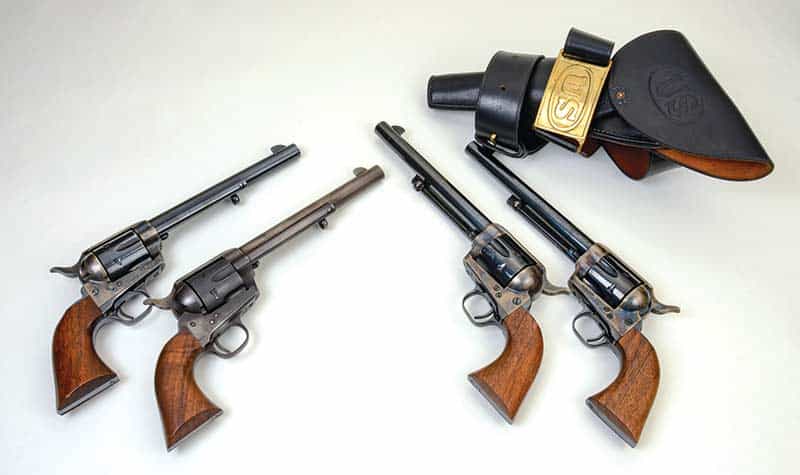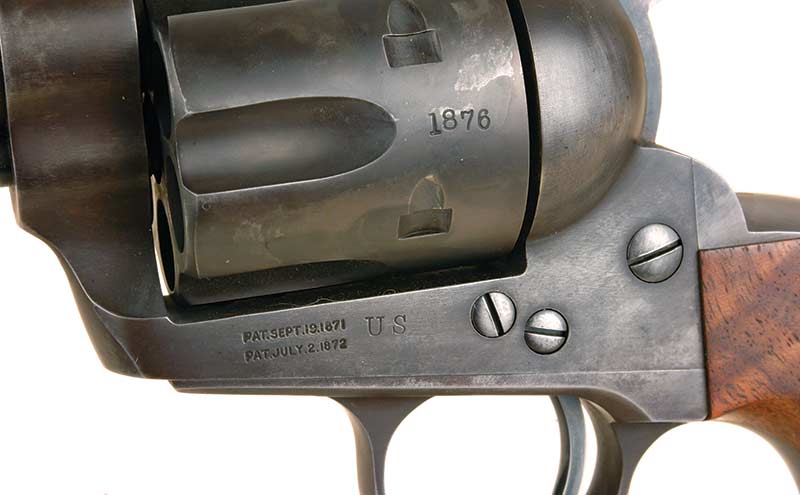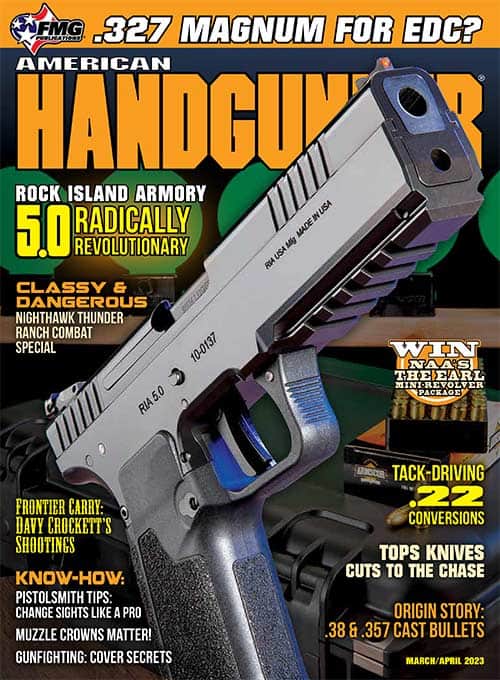Shooting Iron A
Milestone Single Action
Mostly, I don’t get sentimentally involved with my firearms. When I sell or trade one, it goes with no, or at the most, minor regrets.
There is one handgun in my racks, however, that gives me a warm fuzzy feeling every time it’s in my hands. It was made by the now-defunct United States Firearms Company (USFA) and labeled as their Custer Battlefield .45 single action. I first discovered this special run of revolvers at USFA’s booth at the 2004 SHOT Show in Las Vegas.
It stunned me, not because it was a thing of beauty. It was just a brown finished (antiqued) .45 with plain walnut, one-piece grips. What stopped me in my tracks was that it was a nigh-on perfect reproduction of the very first 7½” barreled Colt Single Action Army .45 I had ever seen.
That USFA revolver on display took me back to August 1968 when I entered the National Park Service museum at the then-named Custer Battlefield in southeast Montana. It’s since been renamed Little Bighorn Battlefield. There in a display case was a worn Colt single action .45 with a 71/2″ barrel, patina finish and walnut grips. It was representative of the nearly 700 or so revolvers that were carried onto the battlefields that June day of 1876. From that first moment, I wanted one like it.
Road Trip
That August, my summer job ended, leaving a break before college began. Many readers know the said battle happened when 12 companies of the U.S. 7th Cavalry rode into the Little Bighorn Valley, where five companies were killed to a man, and the other seven were severely handled by Sioux and Cheyenne warriors. I am not alone in my fascination with that fracas; people still come from all over the world to visit the battle site.
Anyway, on a whim, I said to a friend. “Let’s go to Montana so I can see the Custer Battlefield.” Take note we were in West Virginia, and neither of us had been farther west than the Ohio River. Even though he had little idea where Montana or the Custer Battlefield was, my friend said, “Sure.” We loaded up my sister’s VW “Bug” with camping gear, and after a rather erratic 2,000 miles, we arrived. That trip was a milestone. From the first day in Montana, I knew I would spend my life in this state.
The Real Deal Colt
Afterward, finding myself a suitable 7th Cavalry type .45 Colt took a while — a long while. In 1984, Colt again offered the misnamed black powder frame as was typical for their SAAs from 1873 to the mid-1890s. I ordered one, had it fitted with one-piece walnut grips, and carried it on the 1985 battlefield re-ride. That was a horseback trip retracing the 7th Cavalry’s path from the morning of June 25 to where the battle happened that afternoon. Still, something was missing about that Colt. Eventually, I gave it to a friend.
In the mid-1970s, Colt made 2,002 Peacemaker Centennial .45s, almost identical to the ones issued to the 7th Cavalry in the summer of 1874. Sadly, Colt had stamped those two words on the PC’s left sides. By the year 2000, I had rounded up two of those fine revolvers. I considered my 1968 craving satisfied, happily blazing away with my pair of .45s in cowboy action shoots and here on my range.
Then came SHOT Show 2004, and I was standing there near stupefied, looking at USFA’s display Custer Battlefield .45 single action. That revolver was precisely what I had wanted for so many years. As matters turned out, Doug Donnelly, founder of USFA, had visited the Little Bighorn Battlefield himself and was also smitten with the .45 still on display in their museum. To honor the LBH Battlefield, he decided to offer the special version. In placing my order with Mr. Donnelly, he asked what serial number I wanted, as he was allowing buyers to choose. I said, “I suppose 1876 is taken?” As a matter of fact, it was not. Mine wears it now.
USFA no longer exists as a manufacturer and having traveled nearly around the world, I’m no longer the inexperienced 19-year-old that drove so far to see the LBH Battlefield. Hundreds of handguns have passed through my hands, but there is only one that takes my mind back to a memorable trip that changed my life. And yes, I shoot it whenever I can make time!
Subscribe To American Handgunner

Get More Revolver Content Every Week!
Sign up for the Wheelgun Wednesday newsletter here:








